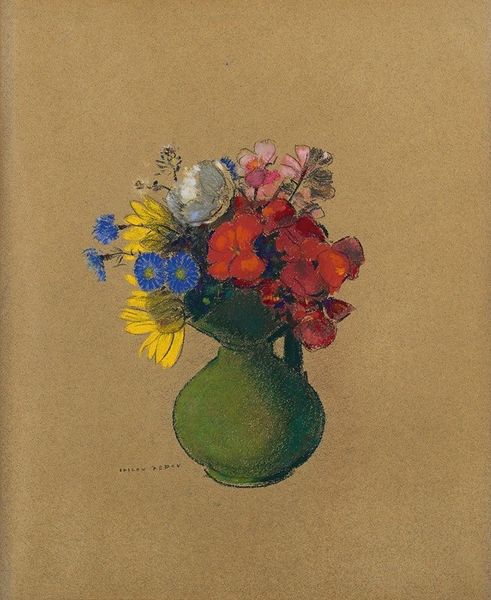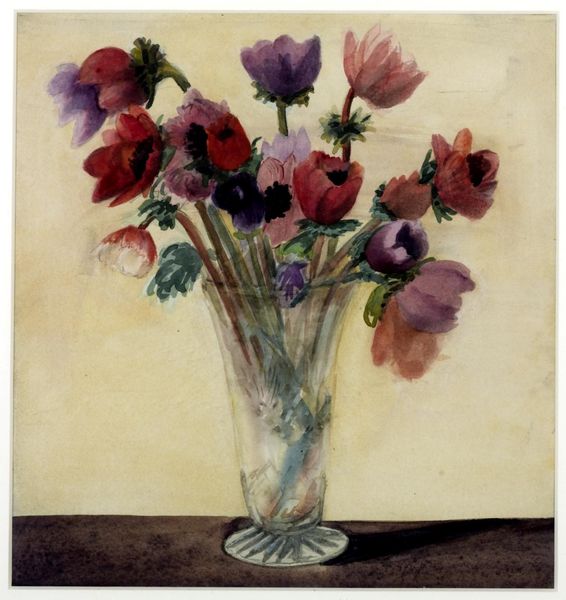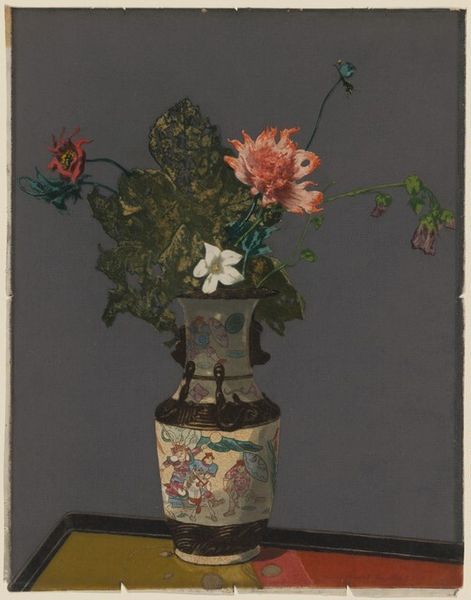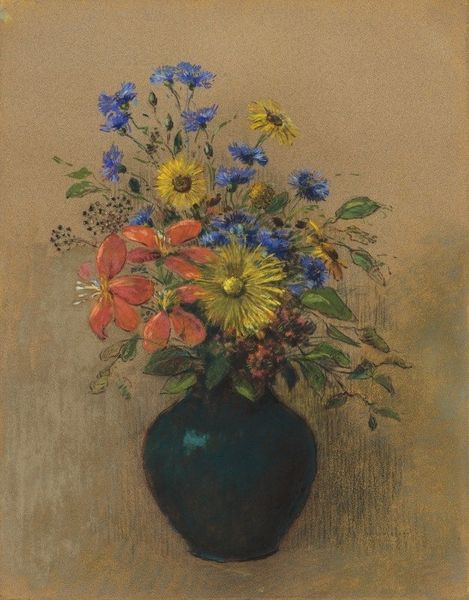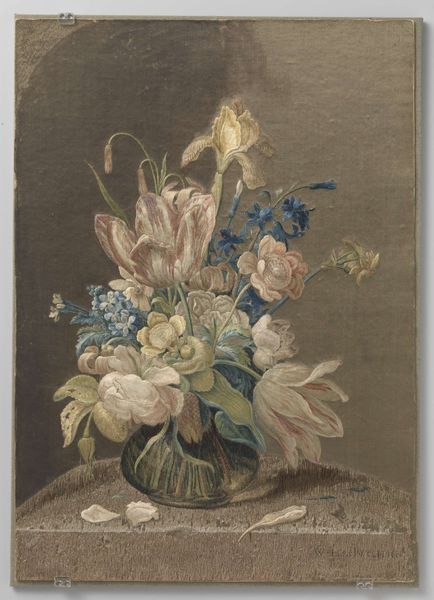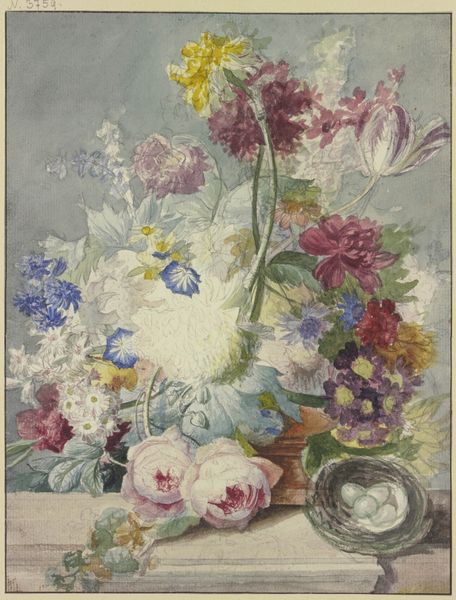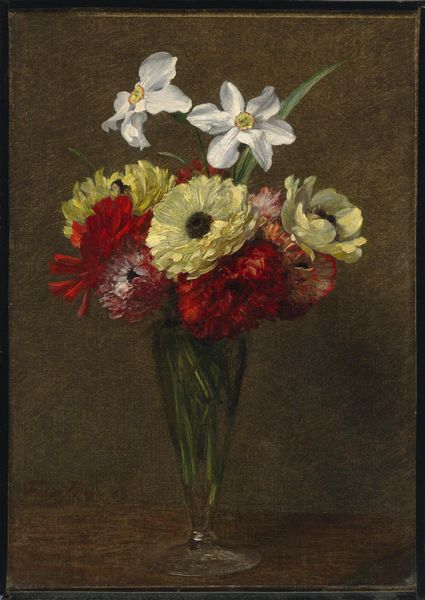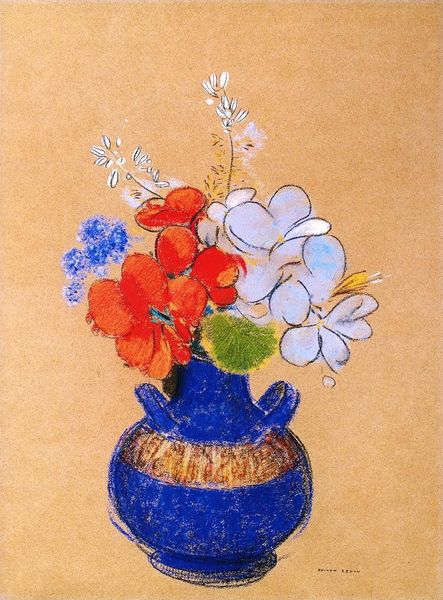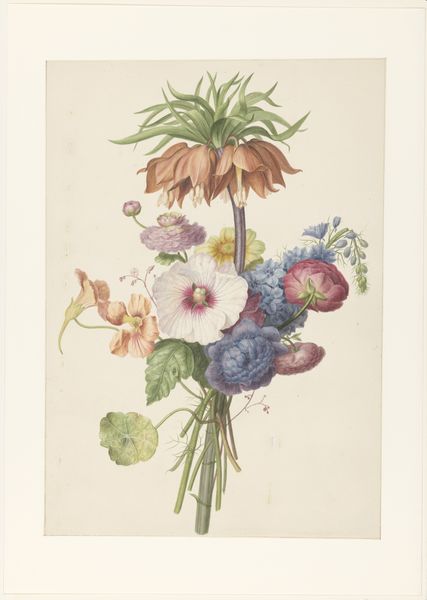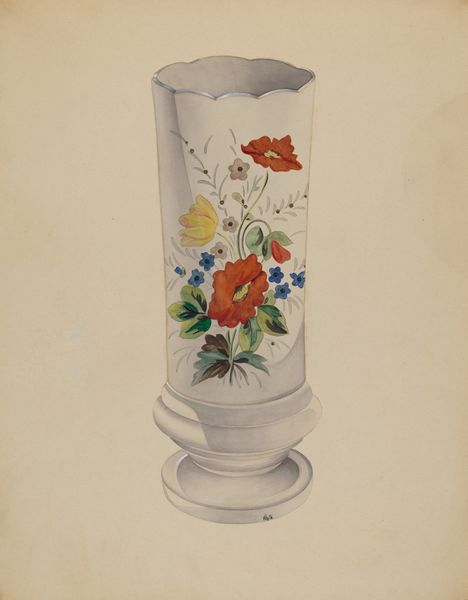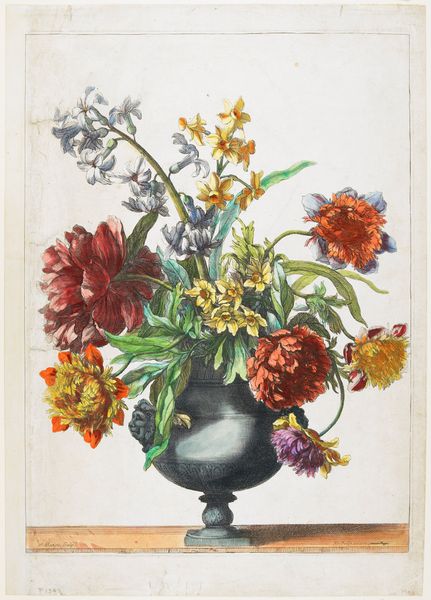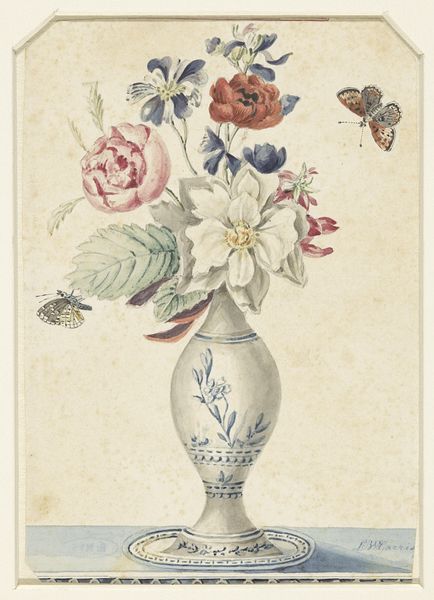
Copyright: Public Domain
Curator: This pastel and charcoal drawing, “Blumenstrauß in brauner Tonvase,” or "Bouquet in a Brown Vase", was created by Odilon Redon sometime between 1900 and 1916. It currently resides here at the Städel Museum. What’s your first take? Editor: The colour palette strikes me immediately; it's somehow both muted and incredibly vibrant. The brown vase anchors the composition, but the flowers almost seem to float ethereally against the hazy background. Curator: Redon’s work during this period, including his pastels and drawings, showcases a fascinating tension. He was working in a very tumultuous socio-political environment; the dawn of the 20th century brought many cultural shifts and a grappling with symbolism and expression. Can we read a sense of that into this arrangement of flowers? Editor: It is interesting you mention that because there is a reading there about fragility, especially if we situate floral still life within historical and gendered frameworks. Consider the ways in which the vase is a conventional domestic item holding these wildflowers, which at second glance have these strange otherworldly colors and ethereal blooms. The brown is quite earthly but the blooms resist simple interpretations of grounding or being rooted. Curator: Precisely. This resists a purely decorative reading. Floral imagery often symbolized ephemerality, feminine virtues, and domesticity during this era. Redon subverts these conventions, creating a visual dialogue between the tangible and the dreamlike, almost disrupting these assumptions of assigned domesticity by playing on expectations. It reflects a deep dive into interiority, as well as broader social changes. Editor: And don’t forget the rise of symbolism that's concurrent with Redon. He brings to play the themes of dreams and the unconscious. Perhaps Redon subtly suggests that traditional, restrictive roles, here, contained by the vase, are ripe for reconsideration in the rapidly changing times. This connects art historical references to contemporary critiques of societal constraint and gender norms. Curator: This interplay speaks volumes about the period. Redon utilizes these accessible symbols and gestures to interrogate our lived realities. This drawing transcends mere aesthetic appeal; it acts as a poignant visual discourse on identity, place, and time. Editor: Exactly, I came in expecting another nice bouquet! I'm leaving contemplating how flowers, vases and brown pigments interact with both the dreams of an artist and an audience.
Comments
No comments
Be the first to comment and join the conversation on the ultimate creative platform.
